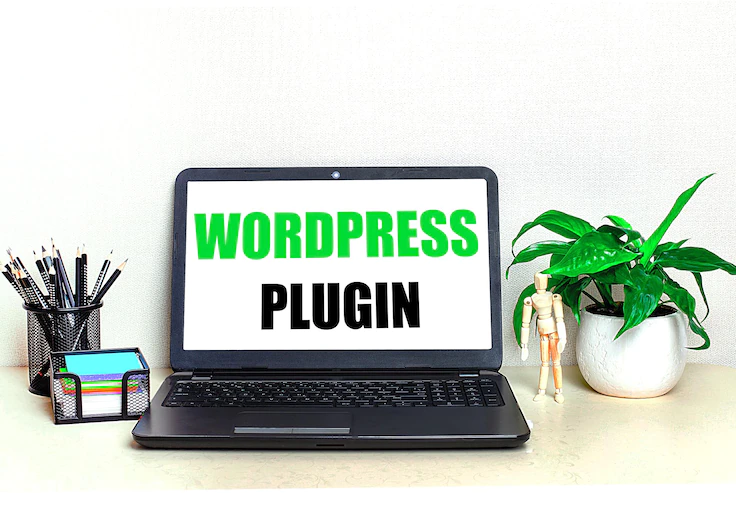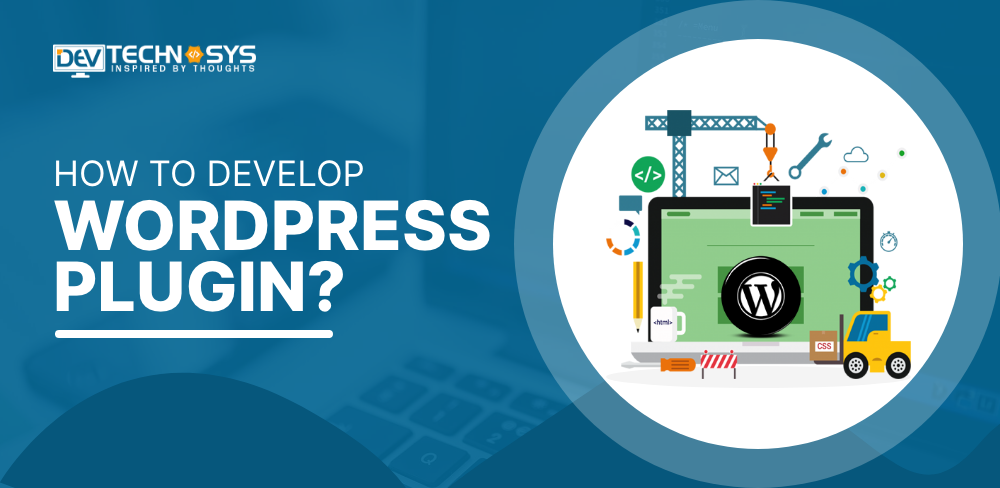WordPress plugins are a great way to add features and functionality to your website without needing to write any code.
They can be used to create custom forms, add e-commerce capabilities, integrate with social media platforms, and much more. So with the right plugin, you can quickly and easily extend the capabilities of your WordPress site.
At the same time, WordPress plugin development requires a certain level of technical skill and knowledge. You need to understand how WordPress works to create a plugin that is compatible with the platform and how to use various APIs and libraries to make it work properly.
WordPress plugin development can be daunting, but with the right steps and dedication, you can create a plugin that will make your website stand out. In this guide, we will discuss how you can develop WordPress plugins from the very beginning.
We will also discuss the features and essential tools of WordPress plugin. Thus, by following this guide, you can ensure that your plugin successfully meets all users’ needs.
So let’s start the blog.
What is a WordPress Plugin?
WordPress plugins are tools that you can add to a WordPress website to extend its functionality. They can add features such as contact forms, SEO optimization, and image galleries.
There are thousands of plugins available for WordPress, and they can be easily installed from the plugin directory within the WordPress administration dashboard. However, you can hire Indian coders to develop a fantastic WordPress website for your business.
Plugins are a great way to add functionality to a WordPress Plugin development website without having to write custom code.
What is the Need for WordPress Plugin
Now that you are familiar with the WordPress Plugin, so it is time to know why someone might want WordPress Plugin development. So let’s have a look at them.
- To Add New Features to a WordPress Site
A plugin can add new functionality to a WordPress site, such as a contact form or a custom login form.
- To Customize the Look and Feel of a WordPress Site
You can use a plugin to customize the appearance of a WordPress site, such as by adding custom styles or modifying the layout.
- To Integrate with Other Services
You can use a plugin to integrate a WordPress site with other services, such as social media platforms or email marketing tools. Hire WordPress plugin developer to build a robust plugin for your WordPress website.
- To Make it Easier to Manage a WordPress Site
You can use a plugin to automate specific tasks or add new features to the WordPress dashboard, making it easier for site administrators to manage their sites.
- To Create a Product that can be Sold or Distributed
Some developers create WordPress plugins as products that can be sold or distributed for free to other WordPress users.
Essentials Tools to Develop WordPress Plugins
Here are the essential tools for WordPress plugin development and customizing the functionality and appearance of the WordPress site. So let’s have a look at them.
#1. Hooks
Hooks allow you to change or add to the default behavior of WordPress without modifying the core code. There are two types of hooks: action hooks and filter hooks. Action hooks allow you to execute custom code at a specific point in the WordPress workflow, while filter hooks allow you to modify data before it is displayed or stored.
#2. Blocks
Blocks are a new way to create dynamic and reusable content in WordPress, introduced in WordPress version 5.0. They allow you to create custom blocks for the WordPress editor, which are use to display content or add functionality to your site.
#3. Widgets
Widgets are small blocks of content that you can display in widget-ready areas of your theme, such as the sidebar or footer. You can use them to display dynamic content, such as recent posts or a calendar.
#4. Shortcodes
Shortcodes are a way to execute PHP functions and display content or elements on your WordPress site. They allow you to add custom wordpress plugin development functionality to your site without writing much code.
Features of WordPress Plugins
WordPress plugins are small pieces of software that extend the functionality of WordPress, the world’s most popular content management system. Some of the key features of WordPress plugins include.
1. Customization
WordPress plugins allow you to customize the functionality and appearance of your website, including adding contact forms, improving SEO, and integrating with social media.
2. Compatibility
The plugins are design to work with various themes and other plugins, ensuring compatibility with your website.
3. Security
Various WordPress plugins are regularly updated to fix security vulnerabilities and ensure the safety of your website.
4. Support
Many WordPress plugins come with support from the plugin developers, including documentation, forums, and email support.
5. Easy installation
You can easily install WordPress plugins from the plugin repository or upload a zip file. Hire dedicated developers for easy installation of your website plugin.
6. Functionality
WordPress plugins can add a wide range of functionality to your website, including e-commerce, analytics, and membership systems.
7. Shortcodes
The WordPress plugins often include shortcodes, small bits of code that you can easily insert into posts and pages to add dynamic content.
8. Widgets
It can also include widgets, which are small blocks of content that you can add to widget-ready areas of your theme, such as the sidebar or footer.
9. Integration
WordPress plugins can integrate with other services and platforms, such as email marketing tools and social media networks.
10. Multilingual Support
Many WordPress plugins support multiple languages, allowing you to translate your website easily.
11. Custom Post Types
The plugins can create custom post types, allowing you to add content to your website, such as events, products, or team members.
12. Custom Fields
It can also add custom fields to posts and pages, allowing you to add additional data to your content easily.
13. Custom Taxonomies
WordPress plugins can create custom taxonomies, which allow you to add custom categories and tags to your content.
14. Custom Roles
The plugins can create custom user roles, allowing you to control what users can and cannot do on your website.
15. Custom Database Tables
WordPress plugins can create custom database tables to store data not stored in the default WordPress tables.
16. REST API
Many WordPress plugins include support for the WordPress REST API, which allows you to retrieve and update data on your website from external sources.
17. Action and filter hooks
WordPress plugins can use action and filter hooks to modify the default behavior of WordPress and add custom functionality.
Steps for WordPress Plugin Development
Now that you are familiar with the need for WordPress plugins, it is time for WordPress Plugin development. You can hire web developers from an experienced web development company for WordPress plugin development. Now, let’s have a look at the below steps.
Step 1: Identify the Requirements
The first and foremost step for WordPress Plugin development is to know your development requirements. It is essential to have a clear understanding of the purpose of the plugin before commencement.
You can easily implement your objective into an effective plugin when you have a definite image of the problems to solve. Below are some of the essential questions you must ask yourself:
- What will be the plugin’s features?
- How will you customize it?
- How will the design look?
Step 2: Opt for Plugin Name
Once you are clear about the requirements, the next step for WordPress Plugin development is to name your plugin. The plugin must be exclusive, pertinent and recognizable. Additionally, perform a few Google searches and check the WordPress Plugin Directory.
It ensures the name you’re considering doesn’t already exist in a plugin of the same name. Moreover, it is imperative to remember that the name you give the plugin will also appear in the plugin’s folder and a PHP file.
However, it is also possible to avoid name collisions by abbreviating the plugin’s name at the start. Thus, opting for a name that you can shorten easily to make a distinctive tag is vital.
Step 3: Create the Plugin folder
Now that you have created a name for your plugin, the next step for WordPress Plugin Development is to create a folder and PHP file. It would be best to take help from an experienced and talented wordpress plugin developer.
For this, go to the wp-content/plugins folder and make a new folder with the plugin name. Remember to put hyphens between the words. For instance, you could name a folder “site-duplicator” if you are creating a WordPress plugin called “Site Duplicator.”
Step 4: Create a PHP file
Once you have made a plugin folder, the next step for WordPress Plugin development is to build a PHP file in that folder. It is crucial to know that you may need single or various files based on the intricacy of developing a WordPress Plugin. Whatever you choose, make sure the plugin and folder names follow the same naming convention as your plugin. Using the above example, you would name your file “site-duplicator.php.”
Step 5: Add the File Header
The next step for WordPress Plugin development is to add the file header. Thus, hiring a plugin developer in WordPress will help in creating plugins for your website. Ensure to only add this header to one of your plugin directory’s many PHP files.
This header should include the name of your plugin. But you could also mention the author’s information, the license, etc., in this area. Save your edits after you’re finished. So you must now include your plugin on your WordPress website with the help of plugin developer wordpress.
Step 6: Add Functions to the Plugin
Now it’s time to start adding the core functionality of your plugin for the WordPress plugin development. It will typically involve writing code to interact with WordPress core functions and APIs and any third-party libraries or APIs you want to use. However, if you want assistance coding your plugin, you must check WordPress Codex. So it will guide you with much information in the developer documentation section.
Step 7: Compress the Plugin Folder
You must change the format of your plugin to.zip before submitting it to your WordPress website. Thus, once you’ve finished including all the code you need, you may compact the plugin directory. Typically, you may simply choose Compress by right-clicking on the folder.
Step 8: Test the Plugin
Before releasing your plugin to the public, it’s essential to test it thoroughly to ensure it’s working as expected. It may involve testing the plugin on different WordPress installations and testing it with different themes and plugins. So, test your plugin thoroughly on your local WordPress development environment to ensure it works as expected.
Step 8: Submit the Plugin to the Plugin Repository
Once satisfied with your plugin, you can submit it to the WordPress repository for others to use. So, be sure to follow the guidelines for plugin submission to ensure that your plugin is accepted.
Final Thoughts:
Plugins enhance the performance of WordPress websites. Users can easily integrate new code into their website with just a few clicks and without coding. However, for the WordPress plugin development, in-depth knowledge of numerous technologies like PHP, JavaScript etc., is mandatory.
Additionally, there are a plethora of plugins for your website, but you may need to create one if you cannot find one that fits your business’s needs. However, if you are a beginner or running out of time, hire a custom website development company that facilitates top-notch services for your business.
Frequently Asked Questions
There are several benefits of WordPress Plugin development. Here are some of them are listed below: To upload a WordPress plugin, you will need to follow these steps: After installing the plugin, click on the “Activate Plugin” link to activate it. The WordPress plugin development cost will depend on various factors. For example complexity of the plugin, customization, number of features, integration with other systems, quality of code, developers’ experience and expertise, locations of developers and so on. You can generally expect to pay around $2000 to $5000 to have a WordPress plugin built.
What are the Benefits of WordPress Plugin Development?
How to Upload a WordPress Plugin after Development?
What is the Cost of WordPress Plugin Development?























